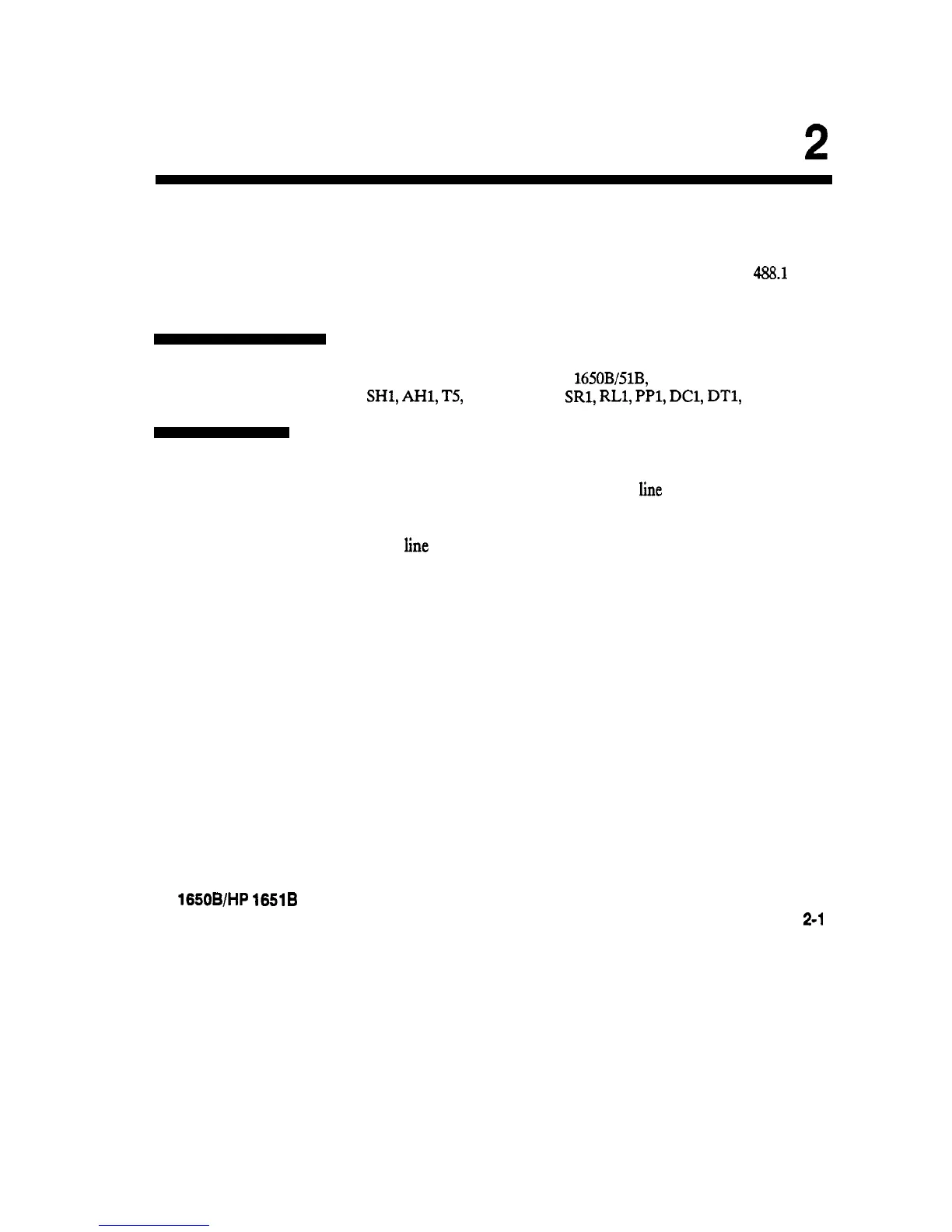Programming Over HP-IB
2
Introduction
This section describes the interface functions and some general concepts
of the HP-IB. In general, these functions are defined by IEEE
488.1
(HP-IB bus standard). They deal with general bus management issues, as
well as messages which can be sent over the bus as bus commands.
interface
Capabilities
The interface capabilities of the HP 1650B/51B, as defined by IEEE 488.1
are
SHl,
AHl,
T5, TEO, L3, LEO,
SRl,
RLl,
PPl,
DCl,
DTl,
CO, and E2.
Command and
The HP-IB has two modes of operation: command mode and data mode.
Data Concepts
The bus is in command mode when the ATN
line
is true. The command
mode is used to send talk and listen addresses and various bus commands,
such as a group execute trigger (GET). The bus is in the data mode when
the ATN
line
is false. The data mode is used to convey device-dependent
messages across the bus. These device-dependent messages include all of
the instrument commands and responses found in chapters 5 through 9 of
this manual and in the individual programming manuals for each module.
HP
1650B/HP
1651B
Programming Reference
Programming Over HP-IB
2-l
